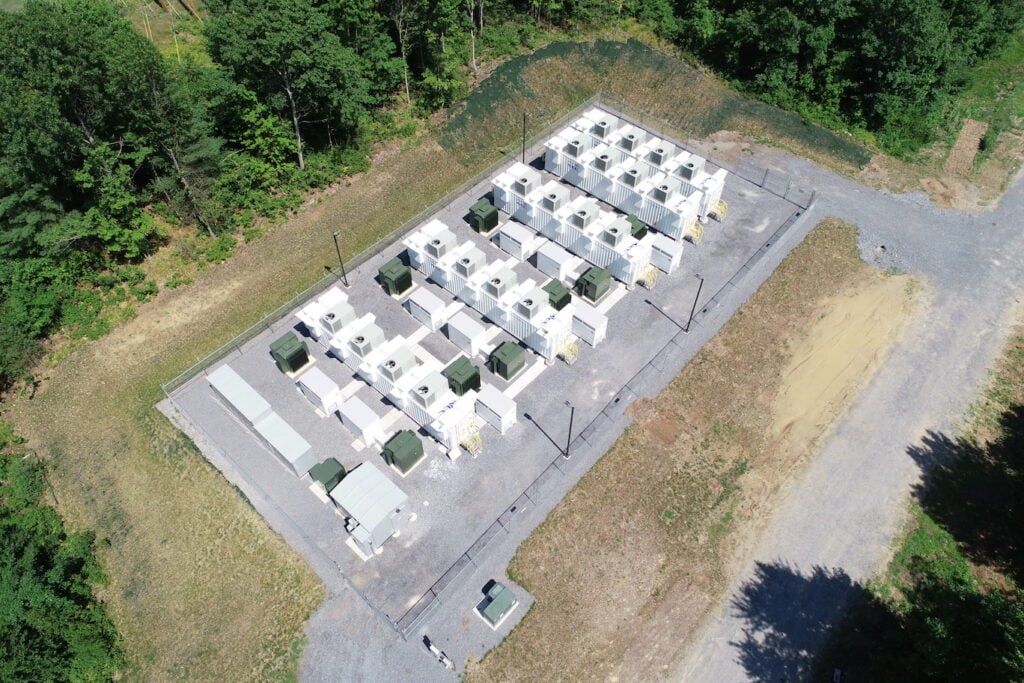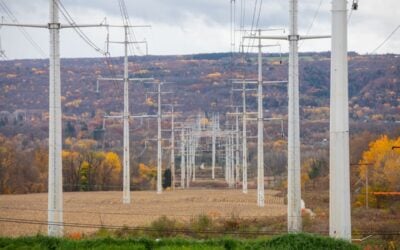
The New York Public Service Commission (PSC) has given the state’s Joint Utilities until the end of 2028 to put in place large-scale energy storage resources, extending a previous 2025 deadline.
The PSC said earlier this month that in addition to the extension on the required in-service date, contracts for energy storage procured by the utilities can now have a maximum 15-year term, rather than the 10 years previously set.
Through legislation put in place in 2018, six utilities across the state had been each handed a mandate to procure megawatts of energy storage. New York at that time had in place a 3,000MW by 2030 storage target, which has since been doubled to 6,000MW. That figure correlates to 20% of peak load forecasted for the New York grid by that time, putting energy storage at the heart of the state’s energy transition.
There has been some concern around the energy storage industry and clean energy advocates that utilities had been slow to act on this responsibility, analyst Vanessa Witte at Wood Mackenzie Power & Renewables told Energy-Storage.news in a recent interview.
Try Premium for just $1
- Full premium access for the first month at only $1
- Converts to an annual rate after 30 days unless cancelled
- Cancel anytime during the trial period
Premium Benefits
- Expert industry analysis and interviews
- Digital access to PV Tech Power journal
- Exclusive event discounts
Or get the full Premium subscription right away
Or continue reading this article for free
For instance Con Edison, one of those utilities, was handed a 300MW target through the state’s first Energy Storage Roadmap, created by public agencies NYSERDA and the Department of Public Service. It hasn’t fulfilled that procurement yet, and there was “definitely frustration” from developers that it hadn’t been done, Witte said.
“I think there’s like a lot of frustration from the developers that Con Ed in particular and some of the other utilities are not procuring a lot of volumes. There’s definitely frustration over Con Ed not procuring their 300MW and needing an extension. 300MW isn’t an insanely large number,” Witte said.
Although Con Edison has put out some requests for proposals (RFPs), Witte has had feedback from developer sources that “whatever price Con Ed wants to pay is essentially not reflective of market price”. Some sources Energy-Storage.news spoke with at the utility said that their teams were working hard to put that right.
As law firm Foley & Lardner pointed out in a corporate blog post on the recent extension, the 31 December 2025 service date was itself an extension from an April 2021 deadline that had already been pushed out.
Stumbles after Bridge Incentive
The PSC acknowledged that out of the 350MW utilities are expected to have procured by now, just 120MW of contracts have been executed. These have received state investment of half a billion dollars, but at the same time, a US$350 million scheme called the Market Acceleration Bridge Incentive Program introduced in the Roadmap has paid out less than half its allotted funds.
That programme aimed at accelerating development of energy storage in New York at utility-scale, or ‘bulk storage’ facilities of over 5MW as it was defined, non-residential commercial and industrial (C&I) or community-scale (‘retail storage’), and residential.
Its impact on stimulating the bulk segment was limited, but it has set up the retail storage segment nicely, Dr William Acker, executive director of the NY-BEST trade and technology group, said in a recent interview.
The successor Roadmap 2.0, published just before the end of last year, proposed a new solicitation programme, called the Index Storage Credit, to allow NYSERDA to contract for bulk storage through competitive solicitations.
It is designed, Acker said, to guarantee some revenue certainty to developers and investors while also derisking the investment of public money; storage assets are paid the difference between a strike price bid in reverse auctions and a reference price based on expected market revenues set by the state.
That could come into place in around a year’s time pending regulatory approval and any amendments along the way.
Along with growing demand for storage to integrate renewables and clean energy like offshore wind growth and rising demand for electric vehicles in New York, and big picture headwinds like the influence of the Inflation Reduction Act, the state will see a robust grid-scale energy storage market in place by around 2025, according to CEO Jeff Bishop of energy storage developer Key Capture Energy.
Bishop and fellow developer Kelly Sarber of Strategic Management Group were interviewed, along with Acker and Witte, for an article on New York’s energy storage market in the newest edition of our quarterly journal PV Tech Power (vol.34).
The first wave of 2018 procurements had not gone as smoothly or quickly as anyone hoped, and while there were mitigating circumstances to that, not least of all the COVID19 pandemic and supply chain constraints, but Roadmap 2.0’s Index Storage Credit and other frameworks are likely to change that.
On that, all of the interviewees were in agreement. However there was also acknowledgement that in order to arrive at the 2030 target of 6GW in time, the state – and the industry and its stakeholders and partners, not least of all the utilities – must act fast.
Read the feature article ‘Hunting the ‘missing money’ in New York’s energy storage market’, in PV Tech Power (vol.34), by subscribing to the journal here, or you can read it free as part of a PV Tech Premium subscription. Every edition of PV Tech Power includes ‘Storage & Smart Power’ a dedicated section contributed by the Energy-Storage.news team.
Energy-Storage.news’ publisher Solar Media is hosting the 5th Energy Storage Summit USA, 28-29 March 2023 in Austin, Texas. Featuring a packed programme of panels, presentations and fireside chats from industry leaders focusing on accelerating the market for energy storage across the country. For more information, go to the website.





